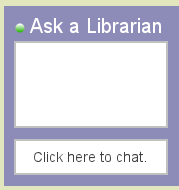Information Update - Fall 2007
Impact and Implications of Social Networking in Libraries: Trend or Flash in the Pan - What Will Last, What Will Pass?
- Basic observational predictions can be made on the implications for social networking in libraries based on membership and exploration of Facebook and MySpace for the last several months. In progressively browsing and networking in this environment I have found it to be a bit compulsive, attention deficit oriented, entirely creative and intensely personal. Social networks are most certainly a trend, one that has the potential to evolve rather than "flash" or die. Social Networking and software is the next step in the advancement of e-communication that gives the user a sense of participation and actual control on the web. As part of the webware you can add art, music, videos, social and thematic groups, and create blogs. MySpace on average is the world's sixth most popular English-language website, the sixth most popular website in any language, and the third most popular website in the United States. MySpace is a commercial mecca for e-business and self promotion. It was originally intended as a network for musicians to promote music, an element still largely present today from garage bands to international name musicians. You can find Kurt Vonnegut and the Red Hot Chili Peppers alongside your best friend from second grade who lives across town.A search for libraries on MySpace pulls up a variety of groups that include academic and public libraries, virtual reference services, the American Library Association, PALINET, youth groups in libraries, YALSA (Young Adult Library Service Association) and plenty of librarians who have found and followed the latest trend in communication and information sharing.
- A search for libraries on MySpace pulls up a variety of groups that include academic and public libraries, virtual reference services, the American Library Association, PALINET, youth groups in libraries, YALSA (Young Adult Library Service Association) and plenty of librarians who have found and followed the latest trend in communication and information sharing.
- Facebook is the student version of MySpace with limited advertisements by comparison. Facebook requires an .edu email address that in theory creates a safer environment for student networking, although there are few limits as to what a student can include in their profile. There is a faculty presence on Facebook which has led to some debate; much of the literature already written on the subject of faculty on Facebook questions the ethics and sensibility of using the format for communication since it is primarily social. Professors and librarians are joining the network to communicate with the students where they are already spending time.
A search using the term library referenced thousands of hits mostly students who in some way decided that the library was important enough to include in their profile. Facebook was kind enough to include "at the library" as a location finder or away message for members. The search for librarian was even more interesting, as of June 5, 2007 at 9:00 PM there were 6 profiles (including mine), 62 names, 6 events and 454 groups. The groups represent the most significant aspect of the library – librarian presence on Facebook. This speaks to why, although social software may be a trend, it is more than just flash in the pan. The group titles range from the sublime to the absurd, for example: I'm a librarian, but I don't own many cats and I work nights (my personal favorite), Do I look like a librarian? and Conan the Librarian, with of course a picture of the Barbarian. The groups included several Ask-A-services as a means of publicizing virtual reference and just libraries promoting services. There are also some serious discussion groups for librarians as a place to "talk" about issues facing libraries, for example: Information Commons, Learning Communities and Digital Reference discussion groups. - What are the implications? It is too soon to tell other than the observation that students are using social software over IM and email as a means of communication. A few years ago walking through the computer labs you would see students working on a paper, searching the web, and several IM screens all open on the same computer screen. MySpace has replaced IM as the message forum of choice. One of the issues being discussed, that requires serious consideration, is whether or not we as faculty are invading student and youth territory. My brief journey into the world of social software indicates that adult and authority presence does not have to be a problem; the beauty of social network software is the capacity to choose who is let in and the level of access allowed. Profiles can be public or private and open only to certain people or networks. They can be searched using advanced systems for interests, status, age, geography and personal profiles. The system can block, report and detect problem users giving the user the onus of responsibility. The growth of membership alone is the most telling indicator with the 100 millionth account being created on August 9, 2006, and on average 230,000 new registrations per day. I have located friends, faculty and professional colleagues on both sites. This virtual home base is not just for students, it is a selective people place. I am encouraged by the fact that I have been "friended" in both Facebook and MySpace by students. I am very careful to whom I reach out in an effort to respect this youth oriented student driven world where they in turn have found me. See you on MySpace - search for librarians!
Clara Hudson

